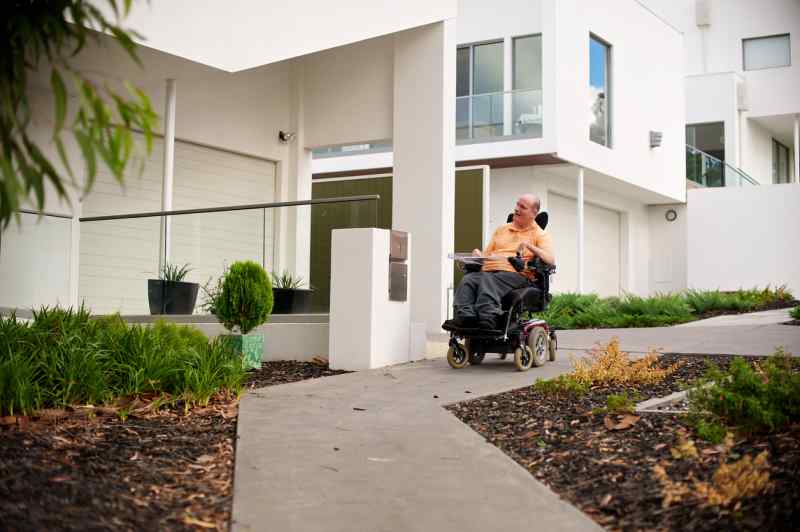What to Look For in Disabled Accommodation

Imagine a world where housing was perfectly designed for disabled people. If that happened, we wouldn’t be disabled people, but enabled to live close to work, and go on holiday wherever we chose. We could even visit friends at the drop of a hat. So, whether you’re newly disabled or you have a view on disabled accommodation, here’s a guide to finding good digs.
23 Things that Make or Break Accessible Housing:
- Enough space in the garage to transfer from your car the wheelchair;
- There needs to be extra room to store wheelchairs and equipment such as an FES bike;
- Hallways need to be at least 1.5m wide for standard wheelchairs;
- In fact, turning circles in the house need to be 1.5m wide to clear the door swing;
- There needs to adequate clear space on either side of a double bed, and on one side of a single bed, as well as between a bed and any furniture unit;
- An adjustable height bed allows easier access;
- Doors need to swing beyond 90 degrees to not catch on the side of a wheelchair;
- Radiators should be out of the way of turning spaces;
- A ramp leading up to the front door would make a house much more accessible;
- A home built on one level as a bungalow would be ideal, but as our post on platform lift solutions and their alternatives notes, a stairlift or even a lift would make multiple storey homes accessible;
- There needs to be flat thresholds between rooms, to stop bumps preventing you from moving between rooms;
- Washing basins should have a shallow fronted bowl, and be of an adjustable height;
- Surfaces should have rounded, and not sharp edges;
- The fridge and freezer units should be on the same level and open from the side rather than the top;
- Carousel shelf units so people can access corner units in kitchens;
- Ideally, kitchen surfaces and the sink should be of an adjustable height;
- To be as easy to use as possible, taps should be of a single lever, mixer type;
- Showerheads should be fitted on a sliding bar so it can be used sitting down or while standing;
- A shower could have a wall fixed shower seat with a backrest;
- The shower tray should be flush with the floor so wheelchair users can roll in;
- There should be suitable drainage and non-slip tiles or a slip-resistant covering on the floor;
- Low pile carpet avoids traction issues;
- Throw rugs should be avoided as these can shift.
To see the above in a handy diagram of a home, see osbourne solicitors’ great infographic.
The State of Disabled Accommodation:
You may have noticed, not many houses are built like this. Housing developers build for a particular buyer persona, who is an average of all the people likely to buy a house, and developers build at low costs. Consequently these days, walls are often built too thin to support stairlifts. There also aren’t considerations about as the size of the front door threshold, which can stop wheelchair accessing a home.
Getting Away From it All
While it might be trickier finding accessible housing in the area that you need for work, you may have greater leave to choose where to go on holiday. Disabled Holidays has an excellent range of accommodation. These days, you can plan trips to the beach, spas, or even go on adventure holidays.
Subscribe:
To get more handy tips on leading a full life as a wheelchair user, subscribe to our blog. You’ll feel part of an international community of wheelchair users that’s in the know, and well informed.
Author: William Sullivan







